Football and How to Survive It
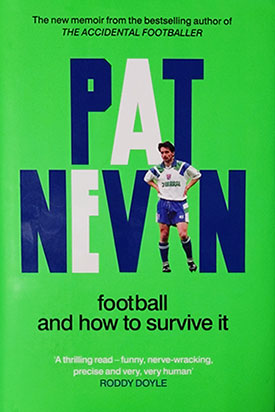
Football and How to Survive It is the title of the second instalment of Pat Nevin’s memoirs. Its 2021 predecessor, The Accidental Footballer, covered his unplanned move into the professional game with Chelsea (having been spotted as a part-timer at Clyde) and, subsequently Everton. One of Colin Harvey’s four big buys in 1988, Nevin enjoyed many good times at Everton, but found himself at a club in a painful transition, coming up just short in the hunt for silverware. The book concluded with the Scottish forward being overlooked by incoming manager Howard Kendall and making a loan move to Tranmere Rovers permanent in 1992.
The new memoir picks up with the author enjoying the happiest times of his playing career – on a par with his first couple of seasons at Stamford Bridge. Looking back, it seems bizarre that an international player at the peak of his powers was dropping down a division, but the 28-year-old Scot was happily settled with his wife in Chester and found Prenton Park to be a refreshingly happy environment to ply his trade, after the tribulations of his last 18 months with the Toffees. It helped that Rovers were embarking on a remarkable period – getting to brink of promotion to the top flight, twice, and playing a brand of attacking football that would draw neutrals to their Friday night games.
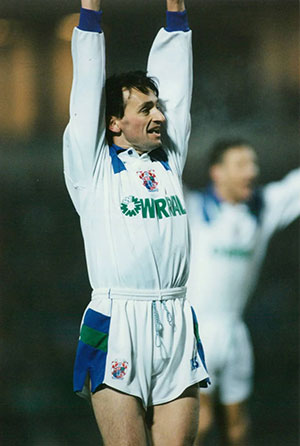
Pat Nevin at Tranmere Rovers
There was no shortage of Everton connections at Prenton Park – former Toffeeman Johnny Morrissey Jr. played on the opposite flank to Nevin, while the squad was superbly, if eccentrically overseen by Johnny King. A wing-half at Goodison in the 1950s, before becoming a legend across the water, King possessed a sometimes bizarre, but effective, turn of phrase. He also had assembled a formidable unit for minimal outlay – adding ace marksman John Aldridge to the squad in 1991.
This idyl would be broken by illness and death impacting family, friends and a clubmate, and the gradual realisation that his young son Simon was ‘different’ in some way. Getting a diagnosis of autism - and the right support network – for Simon took on (to use Nevin’s phrase) Kafkaesque proportions in those less informed days (spoiler alert: Simon is now happily employed as a bus driver for schoolchildren and follows Hibs. His sister, Lucy is now a doctor). Duped into becoming PFA Chairman, Pat got to see Gordon Taylor’s master-negotiator skills at close quarters (picking up a few tips which would prove useful a few years down the line) and getting to spend a glorious evening with one Edson Arantes Do Nasciminto.
This section of the book covers some ground touched on his Pat’s book – In Ma Head Son, a collaboration between with psychologist George Sik (it transpires that this had been slated to be called Football and How to Survive it) – but goes into more detail and has the benefit of hindsight. As at Everton, a change of manager heralded a falling out of favour – on becoming player-manager John Aldridge sidelined the Scot. A phlegmatic Pat returned to Scotland - a long-held ambition - with Kilmarnock. This brought adjustments and no little success on the pitch, but broken promises and directorial high-handedness – not a rarity in the sport – saw Nevin leave for Motherwell.
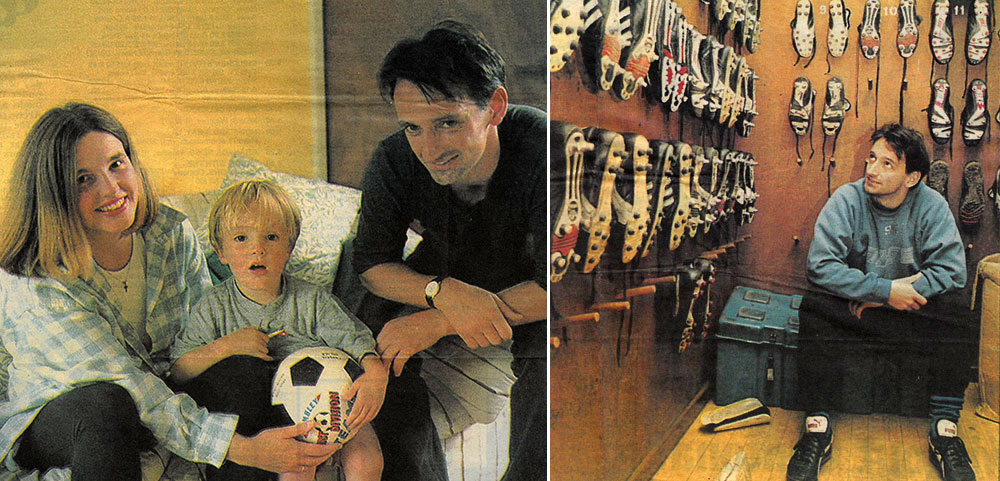
Left: The Nevin family in 1994; Right: Pat of the Rovers
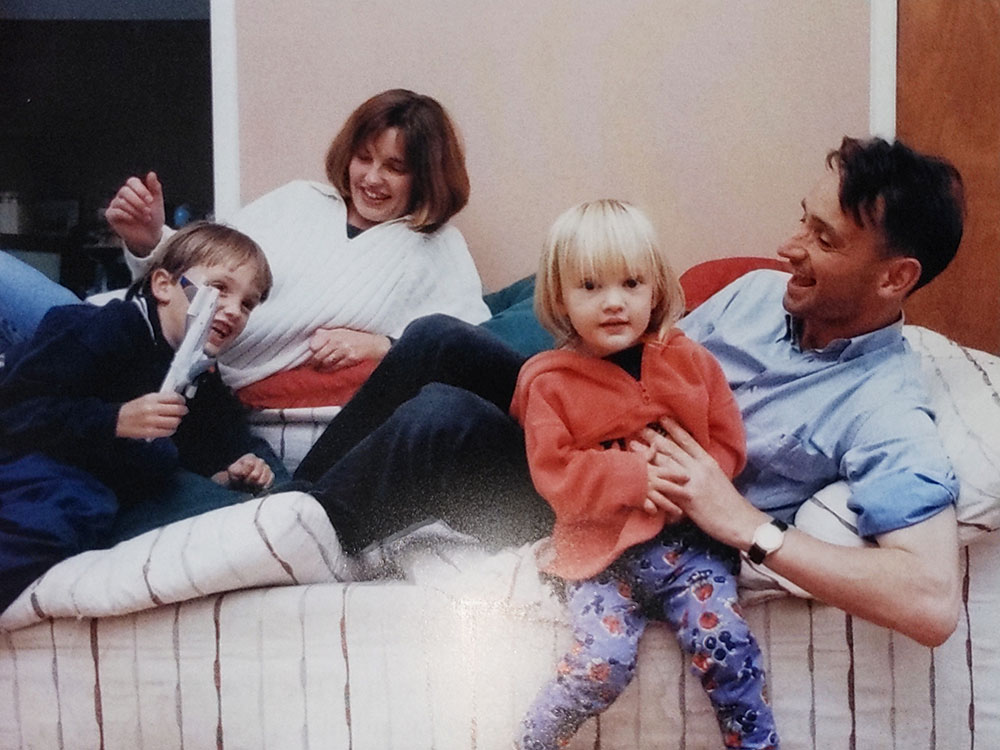
The Nevins in the late 1990s
An unconventional football career went to a new level when the forward was appointed player-CEO of The Steelmen. An acquaintance had acquired the club and had a ‘project’ - to coin the oft-used phrase - to make Motherwell the third force in Scottish football (behind the omnipotent Auld Firm). It created the interested dynamic of Nevin having the power to fire manager Billy Davies, should he so choose, but he could be dropped from the first team by the manager. By his own admission, the good-natured author - who had never planned to have a life in football – found the ridiculous demands of being a CEO to be to the detriment of family (wife Annabel bringing up the children almost single-handed) and social life (there is little in the way of gig-going – although each chapter title is a nod to his musical tastes).
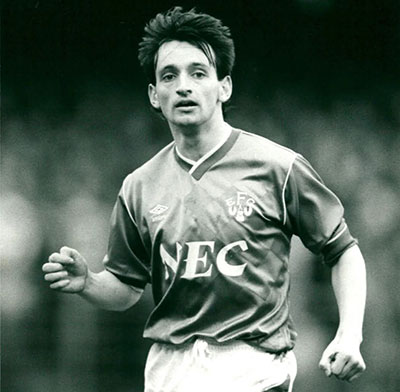
With strong values installed by his parents (he is not beyond poking fun at his own earnestness, acknowledging the wit of the ‘St Fxxxxxg Patrick’ insult thrown his way), Nevin admits to being ill-suited to swimming in the shark infested waters of football administration and the media coverage of it. What transpires is a story seen many times – including in this parish of L4. The new owner/benefactor’s bold ambitions would, in time, be ‘recalibrated’, with the financial tap being turned off. Nevin describes the furious round of adjustments, player sales and cutbacks made to please the finance men. It was exhausting, demoralising and ultimately fruitless in keeping Motherwell out of administration.
The book ends with Nevin, walking away from active involvement in the game – and able to rediscover a better work-life balance through enjoyable work for several media channels. The final passage is a touching tribute to his father, who followed his career everywhere it took Nevin, in England and Scotland.
Understandably, there are only fleeting references to Everton in the pages of the book — Howard Kendall, Duncan Ferguson, John Spencer, Tony Thomas and James McFadden make fleeting appearances — but this eminently readable memoir, gives a wry and illuminating insight into the machinations of the national sport, both on and off the pitch.
Football, and How to Survive it, by Pat Nevin, is published by Monoray. An Audible version is available. Pat is currently doing a tour, speaking about his new book.
Reader Responses
Selected thoughts from readersEither no responses have been submitted so far to this article or previous submissions are being assessed for inclusion.
Add Your Thoughts
Only registered users of Evertonia can participate in discussions.
Or Join as Evertonia Member — it takes just a few minutes and will allow you to post your thoughts on artices across the site.

